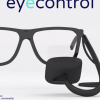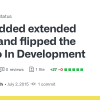
Proof that not all accessibility issues require a lawsuit to effect change.

Proof that not all accessibility issues require a lawsuit to effect change.
A nice overview of the promise of CSS Speech—which is not implemented anywhere, yet—and how it can be (roughly) simulated using JavaScript’s Web Speech API.

Very interesting eye-tracking interaction device for folks with amyotrophic lateral sclerosis (ALS) or who are otherwise “locked in” by a lack of speech or upper body motor control. As I post this, they’ve already raised 50% of their goal (in a mere three days no less).

DAISY and ARIA, sitting in a tree… I’ve been thinking a bit about eBook accessibility in light of the forthcoming second edition of Adaptive Web Design. It’s good to see progress being made. I’d love to see some of this come back into web-based (as opposed to ePub-based) HTML as well.

This post is full of gold! Here’s a peek:
While some of the users had indeed never had much computer experience, a vast number of responses involved highly skilled, technologically-savvy individuals—often engineers themselves—who had helped build the information age but now felt themselves being left behind by Web designers who simply don’t seem to care about them at all.
While issues of privacy and security were frequently mentioned in responses, as were matters relating to fundamental service capabilities, issues and problems relating to user interfaces themselves were by far the dominant theme.
Some of these were obvious.
There is enormous, widespread frustration with the trend toward low-contrast interfaces and fonts, gray fonts on gray backgrounds and all the rest. Pretty, but unreadable to many with aging eyes (and keep in mind, visual acuity usually begins to drop by the time we’ve started our 20s).
Many respondents noted that screen magnifiers can’t help in such situations—they just end up with a big low-contrast blob rather than a small low-contrast blob.
But then we really get into the deeper nitty-gritty of UI concerns. It’s a long and painful list.
Hidden menus. Obscure interface elements (e.g., tiny upside-down arrows). Interface and menu elements that only appear if you’ve moused over a particular location on the display. Interface elements that are so small or ephemeral that they can be a challenge to click even if you still have the motor skills of youth. The list goes on and on.
srcset and flipped the state to In Development
No ETA, but srcset and sizes are coming in Microsoft Edge. So excited about this!
Umar Hansa’s fantastic video overview of how a browser renders HTML and CSS including the render tree and paint events. Thanks for putting this together Umar!

Do you use a screen reader? Please take this survey. Know someone who does? Pass it on. The survey will be open through 24 July 2015.
A brief but inspiring profile of Greg Smith, a quadriplegic programmer and principal software engineer in Microsoft Research.
This bit was pretty incredible:
He puts together the skeleton of whatever section of code he’s working on that day in his mind. Then, using a camera that responds to his head movements and a mouth-controlled mouse and a metal clicker that he’s been using for 20 years, he’s able to key in the code—letter by letter. It would take too long to type out the code first and then start rearranging. So that part he does by memory.
Another great post from Tim. The sooner we recognize how little we actually control when it comes to our websites, the better we’ll be able to serve our users.
Getting a website successfully delivered to a visitor depends on a series of actions. My server must spit something out. That something must be passed over some network. That something must then be consumed by another something: some client (often a browser) on some device. Finally, the visitor views that something in whatever context they happen to be in.
There are a lot of unpredictable layers here.
See also (from this site):